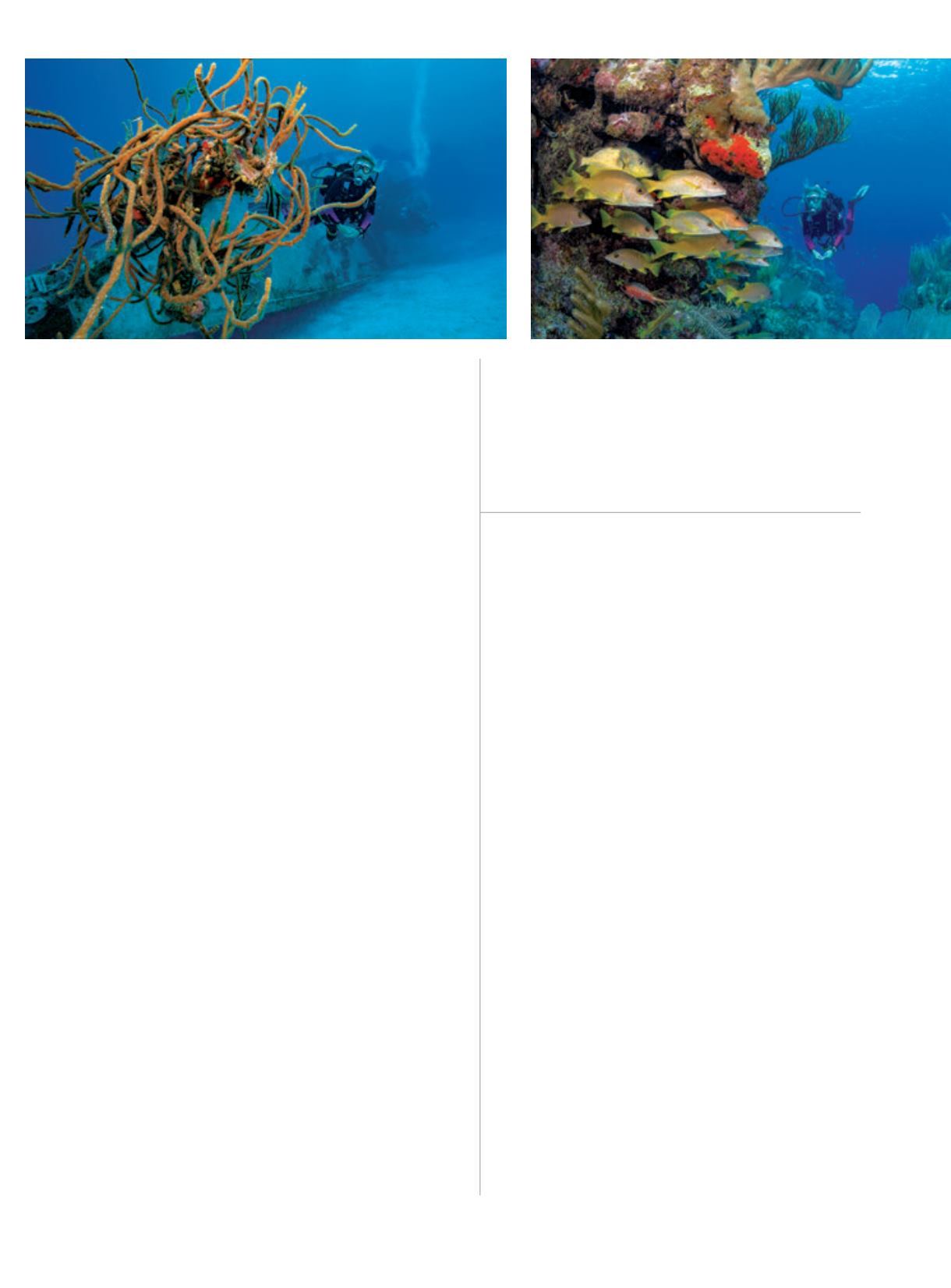
 ALERTDIVER.COM
ALERTDIVER.COM
|
83
Brac from Little Cayman, but with so little boat traffic
and such good cooperation among dive operators there
are always open mooring buoys on Cayman Brac.
Several shallow reefs lie near the wreck, making it
perfect for a morning two-tank dive featuring a wall
or the
Tibbetts
for the first dive and a long, leisurely
second dive on a high-profile spur-and-groove reef for
the second.
The
Captain Keith Tibbetts
is perhaps the most
noteworthy of Cayman Brac’s sites, if only because it is
the only really compelling wreck dive on either of the
islands. There are other historical shipwrecks, such as
the
Prince Frederick
and the
Kissimmee
on Cayman
Brac and the
Soto Trader
on Little Cayman, but these
are smaller vessels and don’t offer the marine life
habitat or dramatic structure of the
Tibbetts
.
Sunk as a dive attraction on Sept. 17, 1996, the
wreck is alternatively known as “the Russian destroyer,”
although that is not an accurate appellation since it’s
a frigate, not a destroyer. Built in 1984 in Nakhodka,
Russia, it carried the designation number 356, which
for many years was still visibly emblazoned on the
hull. The wreck is 330 feet long with a 43-foot beam.
It had been mothballed in Cuba when it was acquired
by a consortium of dive operators and the Cayman
government, then cleaned of contaminants and placed
along a sand slope with the bow rising from about 110
to 80 feet and the stern deck at about 45 feet. It is an
easy multilevel dive with no current and, more often
than not, extraordinary water clarity. The
Tibbetts
holds
some resident fish, most notably barracuda and goliath
grouper, but it is the rich sponge colonization that best
defines this wreck. There are still gun emplacements
fore and aft, which is unusual for those used to diving
shipwrecks provided by the U.S. government, which
normally removes the gun barrels prior to donation.
The
Tibbetts
’ superstructure is aluminum, which
in combination with its 10,000-horsepower turbine
engines meant it was light and fast (it could cruise
at up to 30 knots). The electrolysis between the steel
bow and aluminum superstructure combined with
the ravages of surge have twisted and broken the ship,
but it remains one of the most iconic underwater
attractions of the Cayman Islands.
One of my favorite wall dives is
East Chute
and what
used to be the wreck of the
Cayman Mariner
. Once a
crew boat working in the oil patch off Louisiana, years
of storms have pounded it into little more than a debris
field with at least one photogenic porthole remaining.
You probably wouldn’t go out of your way to dive this
shipwreck, but it does mark the beginning of a deep sandy
valley that punctuates the wall here. The vertical face of
the wall begins at about 70 feet, and large coral mounds
surrounding the valley rise to about 45 feet. Green tube
and orange elephant-ear sponges decorate the wall.
Many of the Brac dive sites earned their names from
shore structures that boat captains used as references
before mooring buoys were installed.
Buccaneer Reef
,
Schoolhouse Wall
and
Cemetery Wall
are examples,
as is one of the easternmost sites along the island’s north
side,
Greenhouse
. The topography is typical of many of
the island’s shallow reefs, with familiar parallel spurs of
coral. Many are ancient star corals, undercut and now
mushroom-shaped. Given that these coral heads were
likely alive when Blackbeard used to hide out on the Brac,
a little erosion with age is to be expected. The crevices
along the coral canyons are populated with grunt and
From far left:
A hawksbill turtle cruises the shallow reef along
Jackson Bight. Caribbean reef sharks are occasionally seen off
Little Cayman, particularly when lionfish are being culled. The
Tibbetts
shipwreck on Cayman Brac has become lavishly decorated
with sponge in the 20 years it has been on the bottom. Schools of
schoolmaster snapper shelter beneath a coral ledge at Greenhouse
Reef on Cayman Brac.


















